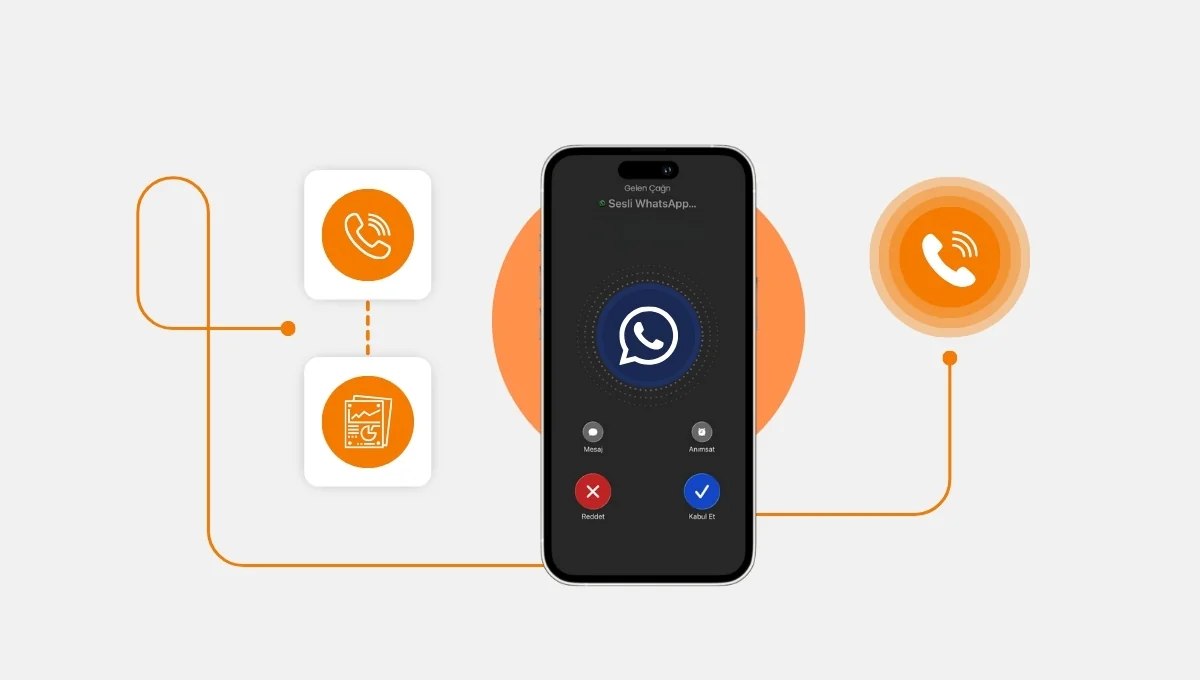How do you measure your call center KPIs? What are the call center metrics that you monitor? Are there call center metrics industry standards you should follow? Every chosen metric depends on the goal(s) of a business.
What you may consider as crucial contact center metrics for your operation could be completely different to other businesses.
Every business has call center metrics for which it benchmarks success. However, if you wish to achieve a thriving contact center, happy customers, with an inflow of revenue, the following call center performance metrics should be on your watch list.
Contact Center Metrics for 2022
- Average Time in Queue
- Average Waiting Time
- Average Handling Rate
- Contact Quality
- Service Level
- Abandonment Rate
- First-Call Resolution
- Occupancy Rate
- Customer Satisfaction
Average Time in Queue
How long do your customers wait before an agent attends to them?

Customers do not like waiting on the phone for an extended period and often drop calls within two minutes of waiting.
Usually, the goal of contact centers is to have a small queue time. However, it’s important to note that eliminating queue time isn’t viable; hence call centers should create exciting ways of keeping customers engaged while waiting for an agent to pick up.
The world’s leading expert on queues Richard Larson said, “Often the psychology of queuing is more important than the statistics of the wait itself.”
You can keep your callers entertained with good music or helpful information through your IVR system.
Great IVR music or message can be the difference between time in queue and abandonment rate.
You can also create specialized queues for teams and agents dealing with specific issues. With an AI-supported ACD system, queues are at a minimum.
Do you provide your callers with a callback option? With the queue callback feature, customers who wait in the queue for more than a specific period of time have the option to get a callback instead of continuing to wait in the queue.
Average Waiting Time
Keeping a watch on your agents’ time between calls is an excellent way to measure your call center operations’ efficiency.
Your call center waiting time shouldn’t be too long or too short as your agents need to maintain the balance of not being distracted by boredom yet not also being overburdened with calls and having just enough time to glance through information for the next call.
Your call center’s waiting time can be affected by your choice of dialers, especially for outbound operations. Some agents may waste time wasted between calls perhaps by; looking for the number for the next contact, or manually dialing the number.
Call center studio spoils you with dialer options that help your business achieve the optimal waiting time for agents.
No business wants less active or overburdened agents.
Having the right combination of dialer options can save your call center operations a lot of waiting time.
Average Handling Time
The Average Handle Time (AHT) is a necessary metric to consider in your call center operations. This measures the average time spent on a call from start to finish, including the talk time and time spent to wrap up.
Average Call Handling Time in your call center is an efficiency indicator alongside call resolution rate and cost per contact.
According to Callcenterhelper, the call center industry standard for AHT is 6 minutes and 3 seconds. However, this varies across different business sectors.
The goal for your contact center operations is to keep your AHT as low as possible. One way to achieve this is by having an effective agent scripting feature to guide and standardize agents’ conversations.
You can also automate questions and decisions based on specific request types to ensure that customers receive timely responses, reducing talk time.
CRM software (when integrated) feeds scripts with data that can also be obtained from other web services to allow a customized and more personalized approach.
Another way to reduce your AHT is by simplifying and standardizing your agent’s after-call reporting process with wrap-up codes – a feature present on Call Center Studio.
Better your average handling time with the best contact center solution partner built on Google Cloud Platform.
Contact Quality
While many may argue that Contact quality may be a subjective way to measure agents’ performance, it boosts customer satisfaction when done right. It helps your contact center measure the professionalism of your agents.
To track this, you need a quality control specialist who will analyze random call recordings while paying attention to details like appropriate call scripts or language, courtesy, effective customer data capturing—providing customers with relevant, accurate information.
You can also measure your contact quality through reports generated by reporting systems. You need to keep an eye on contact quality to identify potential leaks in the overall delivery of quality customer service.
Service Level/Response Time
Response time is one of the key differentiating call center agent performance metrics for your contact center. The average service level of call centers is 80/20. This means that your call center answers 80 percent of inbound calls in 20 seconds (about six rings).

To increase your service level, you could consider reducing the duration of answering calls. However, it is also essential to observe what happens when your agents connect with customers.
Are they prepped for the call? Do they have an idea of what the customer wants?
You need to equip your agents with the correct information about a caller for tailored conversations.
Call Center Studio’s Public API supports quick & easy integration with your choice CRM, which eases the process of tracking caller history. Also, with the functionality of an AI-powered IVR, agents are sent relevant information about a caller. This makes it easier to achieve FCR.
According to call center statistics, service level varies on different platforms;
- Email – 100% of Emails in 24 Hours (the better contact centers are aiming to respond to 80% of emails within 15 minutes)
- Live Chat – 80% of Chats in 20 Seconds
- Social Media –The Industry Average Is Difficult to Define
- SMS/Messaging Apps – 80% of messages responded to within 40 seconds
Abandonment Rate
Do customers call your contact center and have to wait for a long time, eventually getting frustrated and dropping the call? This affects your abandonment rate.

A couple of things could trigger a high call abandon rate for your call center – poorly written IVR script, long waiting time, lousy hold music, or complicated IVR options. Whatever the case, it is a metric you need to monitor closely.
According to a Talkdesk, the call center abandon rate benchmark is around 12%. In some industries, a 2%-5% call abandonment rate is acceptable. However, this may differ with your call center.
For instance, a 5% abandonment rate could prove costly in the e-commerce sector, where customers could easily switch to your competitors.
You should note that the abandonment rate isn’t the same as missed calls (when calls reach a maximum wait time), dropped calls (caused by technical errors), short calls (caller hangs up after agent picks up), or lost calls (abandoned calls + missed calls + dropped calls). Hence, when calculating the abandon rate, you shouldn’t consider those.
For example, if your call center receives 50 calls within an hour, and of those calls, five people hang up before speaking to an agent. Your abandon rate for the last hour is 10%.
Calculation: Abandoned Calls (unanswered) / Total Incoming calls * 100
First-Call Resolution

Many businesses consider First Call Resolution (FCR) as the most valuable call center metric. Research from Customer contact research and consulting firm Service Quality Measurement (SQM) Group supports this.
Calculation: Number of FCR calls / Total Number of Calls
According to SQM, upping your FCR rate is directly proportional to an improvement in customer satisfaction. For every 2% increase in FCR, you get a 2% improvement in customer satisfaction.
FCR measurement can be internal (you get to determine) or external (customers decide). Both measures have different averages. The internal call center industry average is 85%, and the external is 70%.
Wanting better service level for your contact center operations – don’t we all? Let’s talk.
An example of the internal FCR method is when you track if a customer calls back for the same issue within a given period – 14 or 30 days. In contrast, external uses post-call surveys.
Companies that achieve “world-class” customer satisfaction have an average FCR rating of 86%.
How does your contact center measure up, and can you improve FCR?
Before you start improving your FCR rate, you should set averages based on customer call reasons rather than have a generic score.
Creating scores based on each contact reason would help you gain more insight into queries that your agents struggle to resolve on first calls, with the more exact path to handling it.
Another way of improving your FCR is by having an efficient skilled-based routing system. This way, callers are assigned to agents with expert skills to resolve their queries.
Occupancy Rate
How much time do your agents spend on call center-related activity (talk, hold, and wrap-up time) against the logged-in time? That figure is your occupancy rate.

Many companies try to keep the rate between 75% – 85%, as figures below or above could lead to bored or overburdened agents, risking poor customer service delivery and high turnover.
Calculation: work time (talk time + hold time + wrap-up time) / logged-in time x 100
If your call center has 200 hours of logged-in time from agents and spends 150 hours on conversations and wrapping up calls, your occupancy is 150/200 * 100 = 75%.
Note that your occupancy rate could swing in periods with high or low call volumes. Also, companies with smaller call centers are likely to experience low or very high occupancy rates.
What metrics would you consider a gam-changer to your operations? Let’s talk.
Higher occupancy rates do not always mean an increase in productivity. While agents could still handle a short burst in occupancy, it can lead to burnout when sustained for a long time. Hence, your occupancy needs to be considered alongside other factors such as overall productivity, error rates, quality scores, etc., to make the most out of it.
To maintain the right occupancy level, you should have an efficient agent scheduling system to engage agents and balance their work burden effectively.
Another method is by having a multichannel approach to customer service delivery. Your agents should be able to switch channels to balance out high volumes from a particular channel.
Customer Satisfaction
The ultimate goal of tracking metrics is to deliver unrivaled customer satisfaction that converts customers into advocates for your business.
When your business achieves customer satisfaction, it directly affects corporate revenues, employee morale, and performance.
Unsatisfied customers hurt your business and the morale of employees who will have less motivation to handle daily tasks.
Low customer satisfaction can result from having your agents lack the understanding of inquiries, lack of basic skill competence to handle queries or work with a complex call center solution that leaves them frustrated with no motivation to assist customers.
Other challenges could be poor agent scripting and CRM integration that display customer information before getting on a call.
While measuring customer satisfaction could be tricky, after-call surveys, voice analytics, first-call resolution & call abandon rates are good indicators of your call center’s satisfaction level.
What’s Next?
Achieving an exceptional customer experience requires dedication and never leaving the critical call center metrics out of sight.
Playing down the importance of the listed metrics would leave your operations at the risk of losing customers, agents, and business revenue.
The goal for you should be balancing the view of every metric that will ensure customer satisfaction, loyalty, and an overall experience, not leaving out your agents who will be efficient and high-performing assets to your business.
Do you have questions about key call center metrics for your contact center operations or need cloud call center software that will ease the tracking process? Book a quick chat session.




